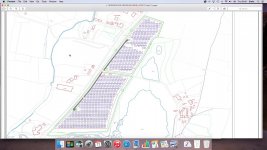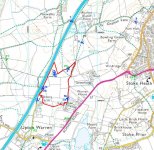Here goes (but the talk was delivered at breakneck speed and I may be wrong at several points):
It is undeniable from the evidence of aerial photographs and maps that over the past seventy years the Flashes have changed from three small ponds to the present situation where the First and Second Flashes have merged and there is some likelihood that the Third Flash will combine to form one large lake. This process is harmful to the (very rare for an inland site) saltmarsh plants which prompted the award of SSSI status for the Flashes. The plants seem to have suffered a drop in numbers perhaps because the rise in water level means the margins do not slope gradually as the plants like. The formation of a lake would exacerbate this process as there would be more wave effect and erosion at the margins. There is also the danger that the effusion of the freshwater Third Flash into the Second Flash would dilute the brine that the plants (and birds?) prefer. The cause of the higher water level is, as John notes, a hypothesis: it is believed that the bed of the Flash is subsiding. If this is the case then the water level will need to be monitored and controlled very carefully, and probably at different levels than hitherto.
It is planned that there will be a six-month long survey to determine if the bed is sinking and where. This survey should not interfere with the breeding birds.
Now for the birds: the problem here is that the waders prefer open land around the waters and margins they feed in but the encroaching reeds, especially the phragmites, are closing off the surrounding shores. It was hoped that the grazing cattle would eat the reeds but they apparently only take young plants. They may have taken out some young reed plants but the mature phragmites are still there to be seen. The cattle have brought some benefits in that they have churned up the soil for the feeding birds but the reeds remain a problem; they propagate both by rhizomes and seed. Because of the SSSI status chemicals cannot be used; mechanical diggers will sink into the soft ground. Clearly more discussions are needed on this urgent problem.
Any corrections and additions will be welcomed.
Peter






